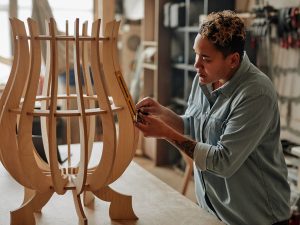Arts and culture play a vital role in bringing communities together. They offer opportunities for people to engage, collaborate, and create a shared sense of identity. Whether through music, theatre, visual arts, or themed activities, the creative sector helps in nurturing bonds among individuals from different backgrounds.
One way to understand the impact of arts and culture on community building is to look at various forms of engagement. These engagements provide platforms for expression, learning, and interaction, contributing significantly to social cohesion.
The Role of Music in Community Engagement
Music has always been a powerful tool for uniting people. Community choirs, local bands, and music festivals provide spaces where individuals can come together to share their love for music. These activities not only entertain but also foster a sense of belonging.
For example, local music festivals often showcase a diverse range of talents, bringing together people from various walks of life. This diversity helps in breaking down social barriers, creating a more inclusive environment.
The Impact of Theatre and Performance Arts
Theatre and performance arts offer unique opportunities for community engagement. Local theatre groups often perform plays that reflect the community’s history, challenges, and aspirations. These performances provide a platform for dialogue and reflection, fostering a deeper understanding among community members.
Participation in theatre, whether as actors or audience members, encourages empathy and cooperation. It allows individuals to see the world from different perspectives, promoting tolerance and mutual respect.
Visual Arts as a Tool for Community Expression
Visual arts, including painting, sculpture, and photography, serve as powerful means of expression and communication within communities. Local art exhibitions and public art projects can transform public spaces and create a sense of pride and ownership among residents.
Community art projects, such as murals or collaborative installations, encourage participation and creativity. They provide an avenue for individuals to contribute to the cultural landscape of their community, enhancing social bonds and a sense of collective identity.
Themed Toys and Creativity in Communities
Themed toys, such as creative LEGO sets, play a crucial role in fostering creativity and community spirit. These toys are not just for children; they offer an engaging way for people of all ages to come together and build something unique. This collective activity can spark conversations, encourage teamwork, and strengthen community ties.
For instance, creative LEGO sets themed around popular TV shows, movies, or music can bring enthusiasts together. Events or workshops centred around these sets can become community hubs where people share ideas and collaborate on building projects. This engagement promotes a sense of community while also stimulating creativity and innovation.
Using themed toys as a medium for community engagement is an effective way to blend fun with learning. It provides a platform for people to interact, share experiences, and create lasting memories.
Festivals and Cultural Events
Festivals and cultural events are essential for community building. They provide a structured opportunity for individuals to celebrate shared traditions, learn about different cultures, and enjoy communal activities. Events like food festivals, cultural parades, and holiday celebrations bring diverse groups together, promoting mutual understanding and appreciation.
These gatherings are not just about entertainment; they are crucial for reinforcing community values and fostering a sense of unity. They offer a platform for cultural exchange and dialogue, helping to bridge gaps between different ethnic and social groups.
Educational Workshops and Classes
Educational workshops and classes in arts and culture provide an excellent way for communities to engage and grow together. Whether it’s a painting class, a pottery workshop, or a music lesson, these activities encourage lifelong learning and skill development. They create opportunities for people to explore their creativity and discover new passions.
Workshops often bring together individuals who might not otherwise interact, fostering new friendships and networks. By learning together, participants build a supportive community environment where they can share experiences and knowledge.
Public Art Installations
Public art installations play a significant role in community development. These projects often involve local artists and residents working together to create pieces that reflect the community’s identity and values. Public art can transform ordinary spaces into vibrant communal areas, making them more welcoming and attractive.
Moreover, public art installations can inspire community pride and ownership. When residents see their contributions in a public space, it strengthens their connection to the community and motivates them to participate in future projects.
Libraries and Community Centres as Cultural Hubs
Libraries and community centres serve as essential cultural hubs in any community. They offer a variety of programs and resources that cater to diverse interests and age groups. From book clubs and storytelling sessions to art exhibits and film screenings, these institutions provide a wide range of cultural activities that enrich community life.
Libraries, in particular, are vital for promoting literacy and lifelong learning. They offer access to a wealth of information and resources that might otherwise be unavailable to some community members. Community centres, on the other hand, often serve as meeting places where residents can gather for social and recreational activities, further strengthening community bonds.
Importance of Local Art Galleries
Local art galleries are crucial for promoting arts and culture within communities. They provide a space where local artists can showcase their work, allowing community members to appreciate and support their creativity. Art galleries often host exhibitions, workshops, and events that bring people together and stimulate cultural dialogue.
These galleries also play a significant role in the local economy by attracting visitors and encouraging spending in the area. Supporting local artists and galleries helps to sustain the cultural fabric of the community and promotes a thriving artistic environment.
Role of Cultural Institutions
Cultural institutions such as museums, heritage sites, and cultural centres are vital for preserving and promoting community heritage. They offer educational programs, exhibitions, and events that highlight the community’s history and cultural diversity. These institutions provide a sense of continuity and identity, helping residents to connect with their past and understand their cultural heritage.
By engaging with these institutions, community members can gain a deeper appreciation of their shared history and cultural traditions. This understanding fosters a sense of pride and belonging, encouraging individuals to take an active role in preserving and promoting their community’s cultural heritage.
Benefits of Community Theatre
Community theatre provides an excellent platform for individuals to express themselves creatively while building strong community ties. Participating in theatre productions, whether on stage or behind the scenes, allows people to work collaboratively, develop new skills, and gain confidence.
Community theatre often addresses local issues and stories, making it relevant and meaningful to the audience. It fosters a sense of belonging and pride among participants and viewers alike, creating a shared cultural experience that strengthens community bonds.
Impact of Cultural Festivals
Cultural festivals are vibrant celebrations that highlight the diverse cultural heritage of a community. These festivals often feature music, dance, food, and art from different cultures, offering a rich and immersive experience for attendees. By celebrating cultural diversity, these events promote mutual respect and understanding among community members.
Cultural festivals also provide opportunities for local businesses and artists to showcase their products and talents, contributing to the local economy and fostering a sense of community pride. These events are essential for maintaining a dynamic and inclusive community where everyone feels valued and respected.




